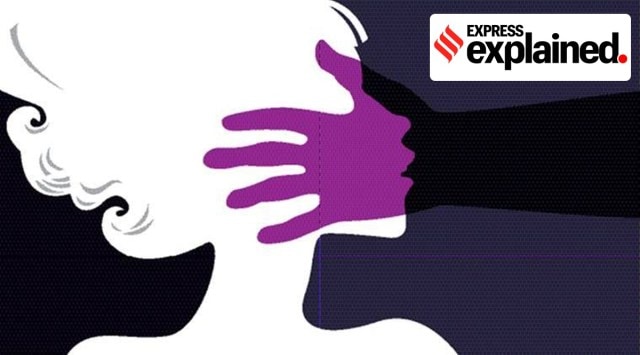Man who urinated on woman on Air India flight accused of ‘outraging her modesty’: What is this offence under IPC?
Air India 'urination' case: Shankar Mishra is accused of 'outraging the modesty of a woman', which is a punishable offence and can lead to either a jail term of up to five years or a fine or both.
 The offence is cognisable (which means the police can arrest without a warrant), non-bailable (which means that bail is not a right of the accused and is granted on the discretion of the judge), and it can be tried by any magistrate.
The offence is cognisable (which means the police can arrest without a warrant), non-bailable (which means that bail is not a right of the accused and is granted on the discretion of the judge), and it can be tried by any magistrate. Shankar Mishra, the Air India passenger accused of urinating on a woman on board a New York-New Delhi flight on November 26 last year, told a Delhi court on January 11 that while his act may have been obscene and revolting, it did not qualify as a case of outraging the woman’s modesty. The court reserved its order but denied him bail, which is usually done when a prima facie case is made out.
What is the provision on “outraging the modesty of a woman” in the Indian Penal Code (IPC), 1860, what are the ingredients of the offence, and how did the court determine that Mishra’s act did not qualify?
What is the crime of ‘outraging the modesty of a woman’?
Under the Indian Penal Code, outraging the modesty of a woman is a punishable offence. IPC Section 354 prescribes either a jail term of up to five years or a fine or both for the offence. This section originally read:
“Assault or criminal force to woman with intent to outrage her modesty. — Whoever assaults or uses criminal force to any woman, intending to outrage or knowing it to be likely that he will thereby outrage her modesty, shall be punished with imprisonment of either description for a term which may extend to two years, or with fine, or with both.”
In 2013, Section 354 was amended to make the punishment more stringent, and the sentence was changed to not less than one year and up to five years.
What are the ingredients of an offence under this section?
The offence is cognisable (which means the police can arrest without a warrant), non-bailable (which means that bail is not a right of the accused and is granted on the discretion of the judge), and it can be tried by any magistrate.
The words “assault” and “criminal force” (used in the section) are defined in Sections 351 and 350 of the IPC respectively.
Section 351 reads: “Whoever makes any gesture, or any preparation intending or knowing it to be likely that such gesture or preparation will cause any person present to apprehend that he who makes that gesture or preparation is about to use criminal force to that person, is said to commit an assault.”
Section 350 says: “Whoever intentionally uses force to any person, without that person’s consent, in order to the committing of any offence, or intending by the use of such force to cause, or knowing it to be likely that by the use of such force he will cause injury, fear or annoyance to the person to whom the force is used, is said to use criminal force to that other.”
Pertinently, ‘intention’ and ‘knowledge’ are vital ingredients for the alleged act to fall under the purview of IPC Sections 354, 351, and 350.
Offences that are less severe in nature, fall under the purview of Section 509 of the IPC, which deals with “word, gesture or act intended to insult the modesty of a woman”. The main difference between Sections 509 and 354 IPC is that the latter goes beyond the act of outraging the modesty of a woman and involves clear threat of physical harm or assault to the woman.
And how is ‘modesty’ defined?
The Supreme Court clarified this issue in 2007, in the case of ‘Ramkripal vs State of Madhya Pradesh’, where it noted that although the IPC does not define what constitutes an outrage to female modesty, the “essence of a woman’s modesty is her sex”.
“What constitutes an outrage to female modesty is nowhere defined in IPC. The essence of a woman’s modesty is her sex. The culpable intention of the accused is the crux of the matter. The reaction of the woman is very relevant, but its absence is not always decisive,” the court held.
Deeming ‘modesty’ as a virtue which attaches to a female owing to her sex, the court went on to give examples such as the act of pulling a woman, removing her saree, coupled with a request for sexual intercourse with the knowledge that her modesty might be outraged is sufficient to constitute the offence even without any deliberate intention.
So what is Shankar Mishra’s argument?
While arguing for Mishra’s bail before Metropolitan Magistrate Komal Garg, lawyer Manu Sharma told the court that IPC Section 354 was not made out in this case as there has to be driving intent behind Mishra’s act for it to be considered while booking him under this section.
The accused’s lawyer also contended that age too must be considered in this case, arguing that the complainant was 72 and the accused was 34, thereby implying that there was no sexual desire on Mishra’s part.
“The case is that I am inebriated… The question is, was the unzipping to satisfy a sexual desire? That is not the case. I am not running away from the fact that it was obscene… Her statement doesn’t make the case in four corners of putting me as a lustful man,” Sharma told the court.
Mishra’s bail application also stated that the Air India crew had woken him up during the flight, informed him about the incident and suggested that he was the perpetrator, thereby implying that he had no knowledge or intent which is a requirement under Section 354 of the IPC.
His lawyer argued that while Mishra can be prosecuted under Sections 509 and 294 (“obscene act in any public place”) IPC, he cannot be prosecuted under Section 354, because there was a lack of both intention and knowledge.
- 01
- 02
- 03
- 04
- 05






































